Physical Address
304 North Cardinal St.
Dorchester Center, MA 02124
The management of a patient with a tumor of the parapharyngeal space (PPS) is a challenging task. The complex nature of the anatomy of the PPS and the diversity of its contents gives rise to a wide variety of tumors. This presents an opportunity for technically challenging surgery. Current imaging modalities, including computed tomography (CT) and magnetic resonance imaging (MRI), have characterized the intricate anatomy of the PPS. Once these imaging techniques became readily available, surgical techniques were subsequently devised to remove the tumors identified within the PPS.
The PPS has historically been subdivided into the prestyloid and poststyloid compartments ( Figs. 69.1 and 69.2 ). The two compartments are divided by the fascia of the tensor veli palatini as it extends from the styloid process to its insertion on the lateral pterygoid plate. The prestyloid compartment lies deep to the masticator space, with the deep lobe of the parotid extending into its lateral aspect. The prestyloid PPS contains the deep lobe of the parotid gland, adipose tissue, small blood vessels, lymphatics, and minor nerves. The poststyloid compartment, also termed the carotid space, encompasses the carotid sheath and is traversed by cranial nerves IX, X, and XII. The cervical sympathetic chain lies posterior to the carotid artery. This information is invaluable in developing a differential diagnosis and plan of management for these tumors. The remainder of this chapter focuses on the management of tumors found within the prestyloid PPS.
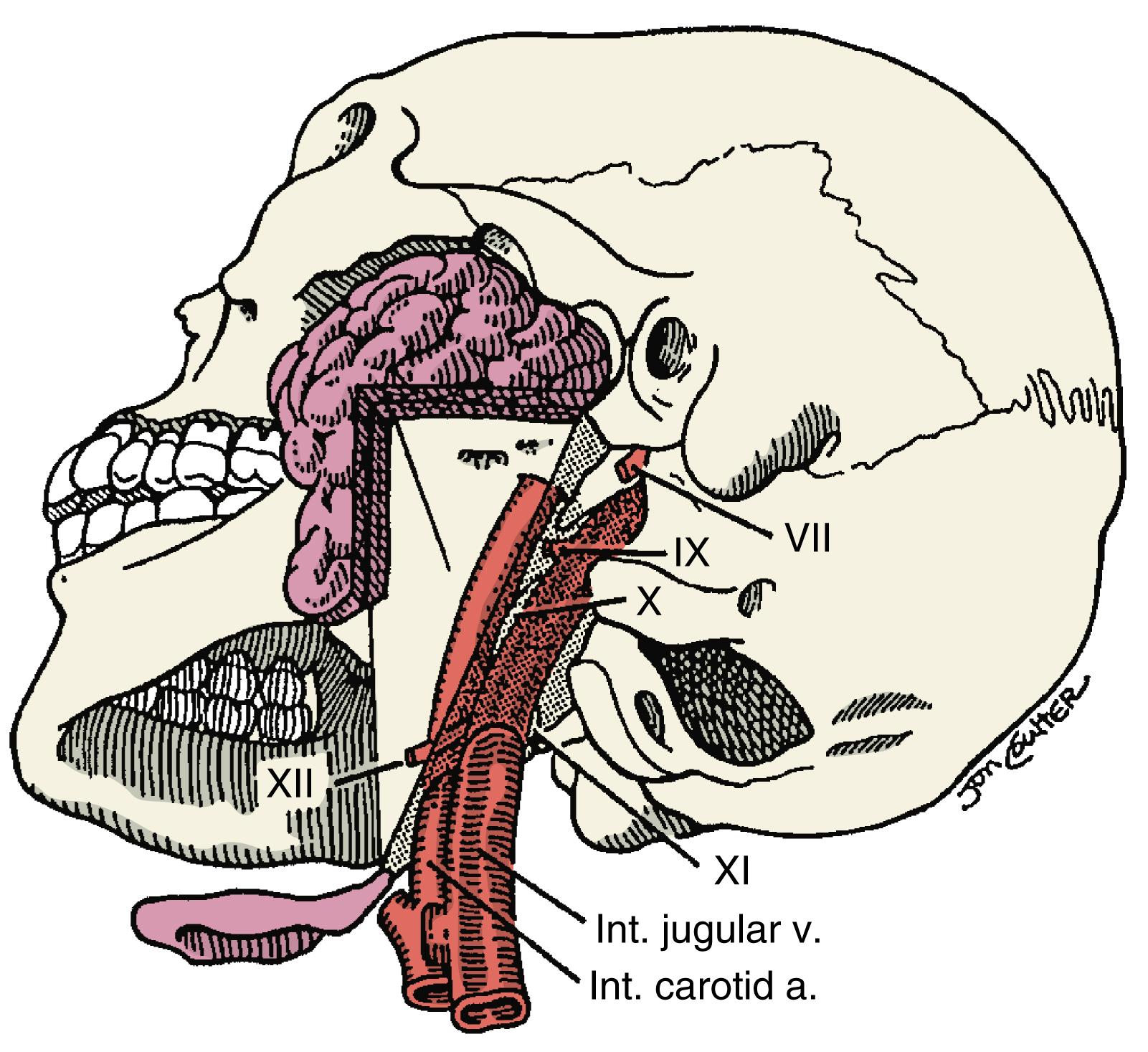
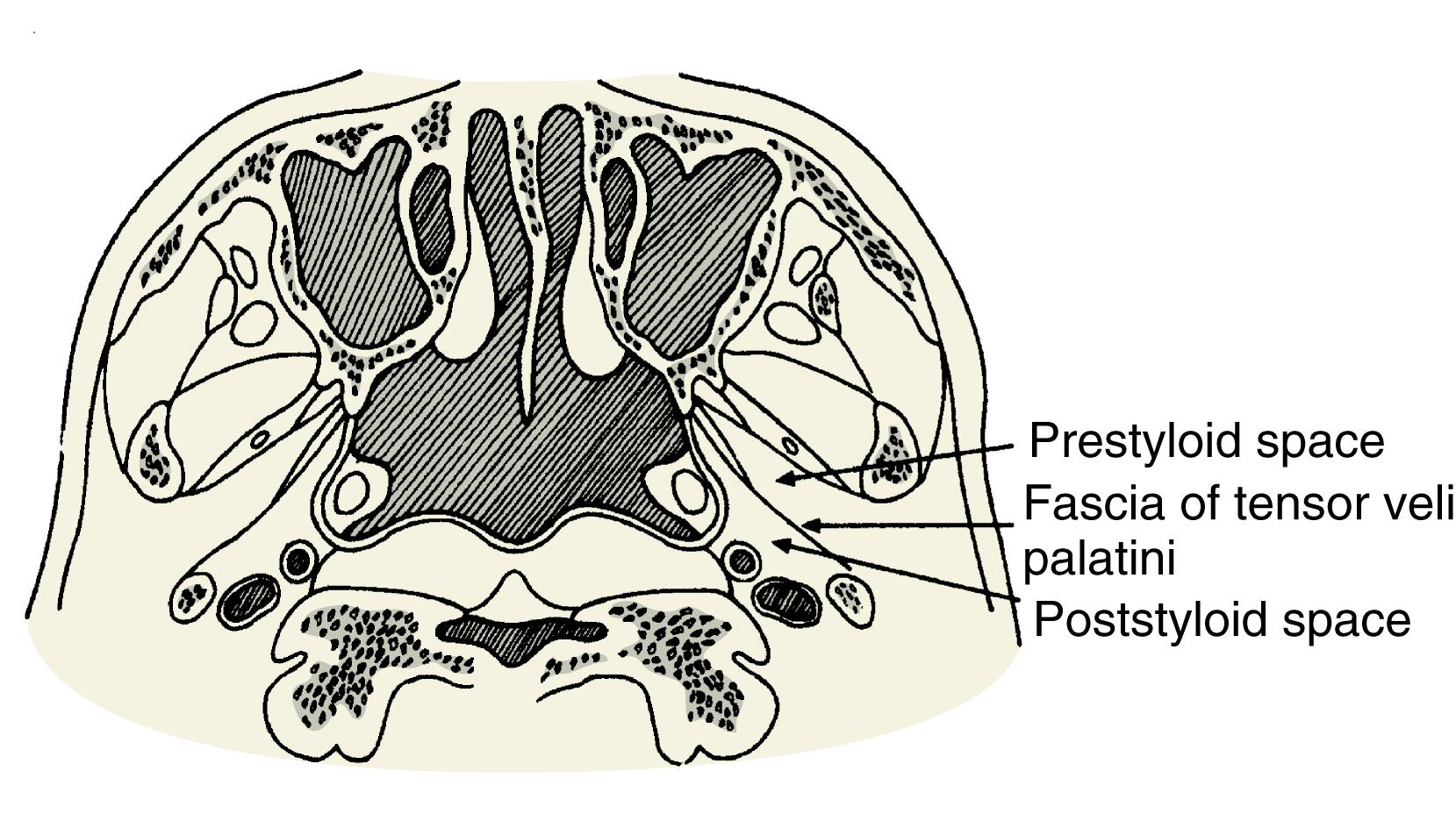
The PPS is described as being an inverted triangle extending from the skull base to its apex at the hyoid bone (see Fig. 69.1 ).
The vast majority of tumors within the prestyloid PPS are of salivary gland origin, most commonly pleomorphic adenomas.
The prestyloid PPS is ideally approached using the transcervical submandibular operative technique.
History of present illness: The signs and symptoms associated with tumors that arise in the PPS are numerous and depend on both the location within the PPS as well as the histologic type.
Location
The most common presentation is an asymptomatic mass in the lateral wall of the oropharynx with or without a mass in the parotid or neck ( Figs. 69.3 and 69.4 ).
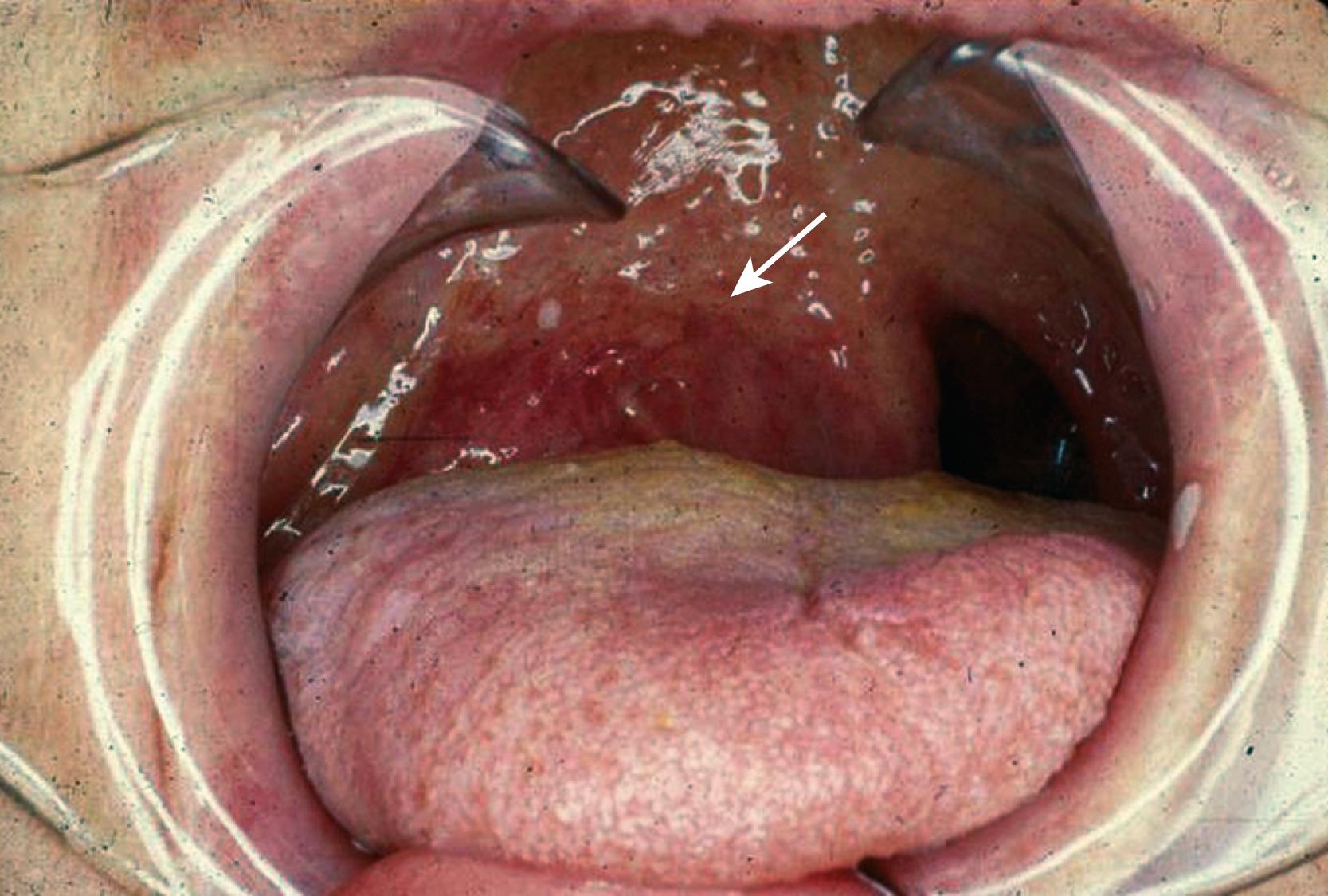
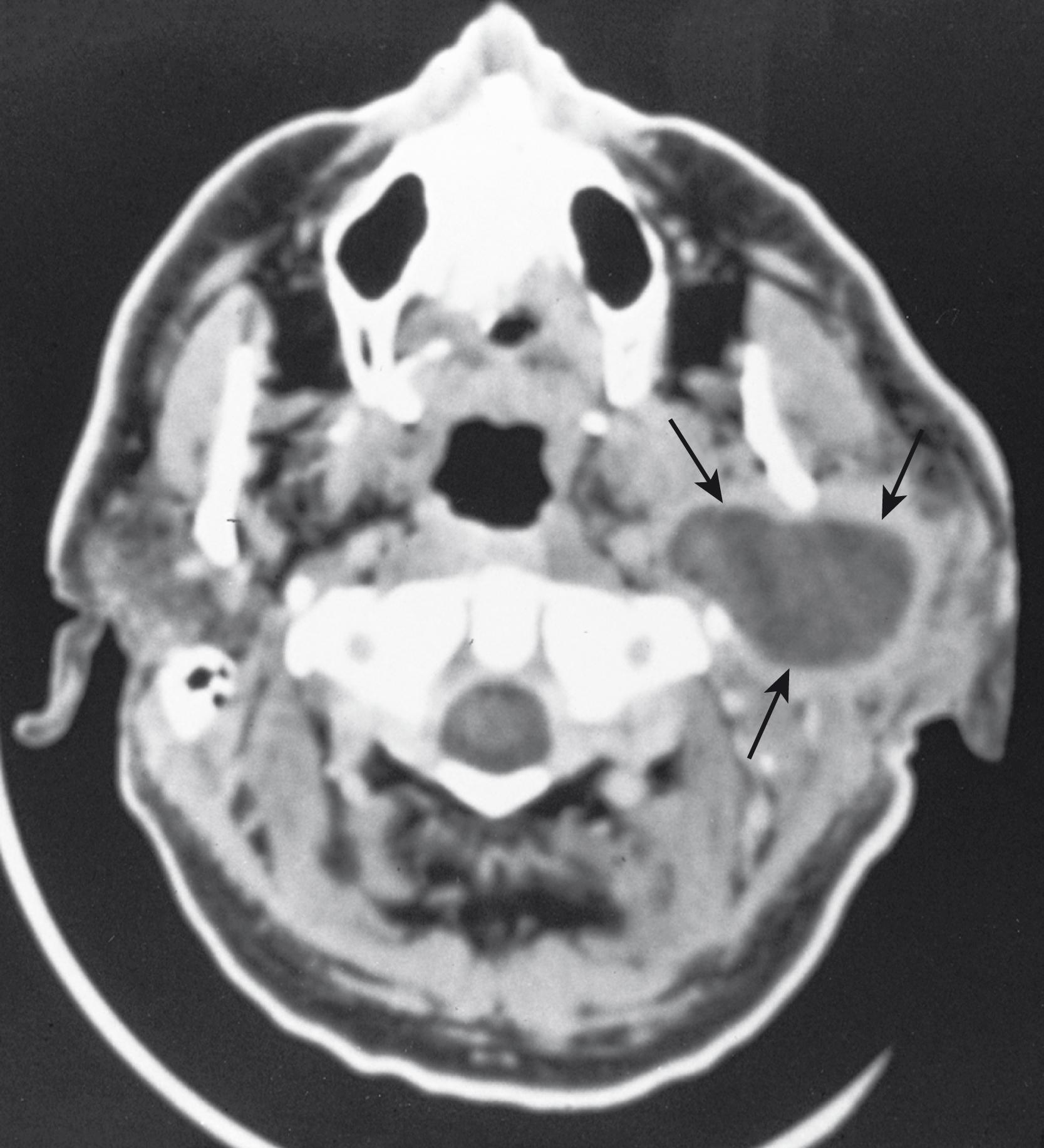
Large tumors in the prestyloid PPS may present with otalgia, aural fullness, or temporomandibular joint tenderness likely related to the mass effect of the tumor on surrounding structures.
Tumor expansion may interfere with swallowing, breathing, or the proper fit of dentures.
Histology
Benign tumors often present as a submucosal asymptomatic mass in the oropharynx.
Malignant tumors are more often associated with the presence of pain or neuropathy or, less frequently, facial nerve weakness.
Past medical and surgical history
A prior history of parotid tumors or cancer should be elicited from the patient.
Has the patient had parotid surgery in the past or a history of radiation?
Is there a history of autoimmune disease, skin cancer, or lymphoma?
Family history
In patients suspected of having paragangliomas within the poststyloid compartment, a family history of paragangliomas should be sought.
Medications
Antiplatelet and anticoagulation medications, including herbal products, should be elicited prior to surgery.
Social history
A tobacco and alcohol history should be obtained.
Oral cavity/oropharynx
The PPS is bounded laterally by the mandible, superiorly by the skull base, and medially by the buccopharyngeal fascia and the constrictor muscles of the pharynx. Because two sides of the PPS are bone, tumors arising in the PPS expand along the path of least resistance toward the soft tissue of the pharyngeal wall, displacing the wall and the tonsil to present as a submucosal and often asymptomatic mass in the pharynx.
Direct palpation of the tumor both intraorally and extraorally is essential.
Deviation of the uvula away from the affected side is occasionally seen with large tumors.
Cranial nerve examination
Cranial nerve VII neuropathy may indicate facial nerve involvement of a tumor arising from the deep lobe of the parotid gland.
Other cranial nerve neuropathies suggest poststyloid involvement of a PPS lesion.
Neck
Large prestyloid PPS tumors may present with fullness in the neck and/or parotid region.
Palpable cervical lymphadenopathy may represent metastatic disease.
Flexible fiberoptic laryngoscopy
This is a critical aspect of the head and neck examination in a new patient with a lesion of the PPS. Often a submucosal lateral pharyngeal mass is visualized on flexible laryngoscopy. Vocal cord movement should also be evaluated for cranial nerve X involvement of a poststyloid PPS lesion.
All patients suspected of having a tumor in the PPS should undergo imaging studies. Both contrast-enhanced CT and gadolinium-enhanced MRI provide excellent detail for evaluating lesions of the PPS. The distinction between tumors of the prestyloid and poststyloid space is determined radiographically based on a clear understanding of the anatomy in this region.
CT scan with contrast is often used due to its excellent anatomic detail, ease of use, and accessibility and can be done in patients with contraindications to MRI ( Table 69.1 ). However, when possible, many radiologists advocate the use of gadolinium-enhanced MRI with T1- and T2-weighted images for optimal characterization of tumors in the PPS. Furthermore, MRI is the optimal technique when there is suspicion of intracranial extension or nerve involvement.
| Computed Tomography Scan |
|---|
|
Prior to evaluating imaging characteristics of a lesion, it is critical to identify that the lesion originates in the PPS and is not an extension of a lesion from an adjacent space. Visualizing a margin of adipose tissue separating the lesion from the bordering space is paramount to not only confirming that a lesion originated in the PPS but also formulating the differential diagnosis. Tumors that arise de novo in the PPS independent of the parotid gland have an adipose tissue plane separating it from the deep lobe of the parotid gland ( Fig. 69.5 ). Conversely a deep lobe parotid mass located within the prestyloid PPS will show obliteration of the adipose tissue plane at the posterolateral margin of the PPS. This is a very important point in the differential diagnosis, because tumors that are independent of the parotid gland may be removed through a cervical approach, whereas tumors arising in the deep lobe of the parotid gland with extension into the PPS must be approached through a parotid-submandibular approach in order to avoid injury to the facial nerve.
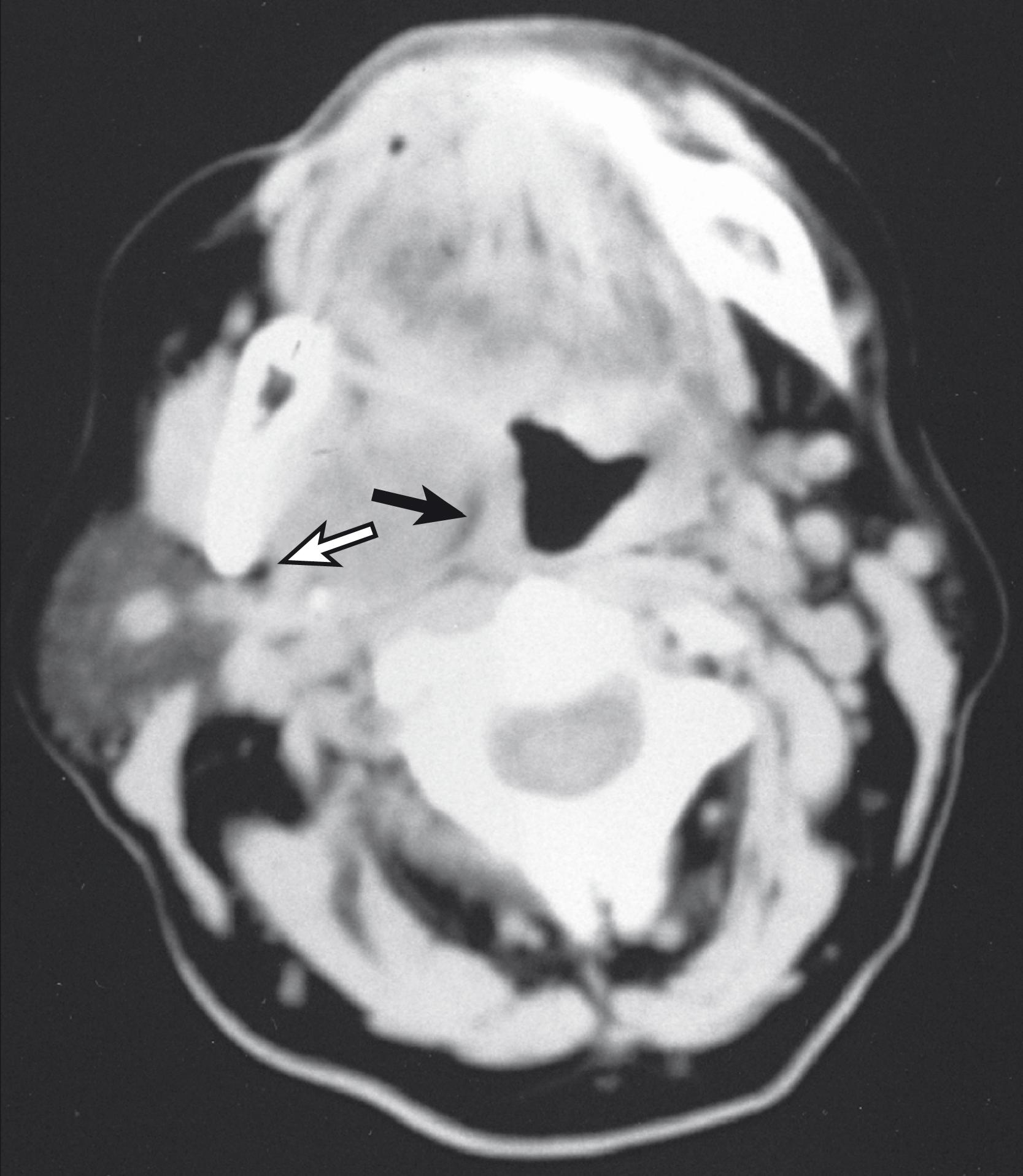
Patients with prestyloid PPS tumors should be offered surgical treatment if they are healthy enough to undergo a general anesthesia. Even patients with pleomorphic adenomas of the prestyloid PPS benefit from surgery, given the risk of malignant transformation if these tumors are merely observed.
Medical comorbidities with increased risk for general anesthesia
Significant cervical stenosis or fusion preventing neck rotation and extension
Vascular tumors with variable vascular supply
These are more likely to present in the poststyloid PPS.
Review imaging studies to confirm tumor location in the prestyloid PPS.
Consider fine-needle aspiration (FNA) to obtain preoperative diagnosis.
The role of FNA in the evaluation of patients presenting with a PPS mass is controversial. Some clinicians advocate its use for unusual cases, given that non-neoplastic processes, such as branchial cleft cysts and inflammatory masses, may occasionally present in the PPS. Given the difficult location of the PPS, CT-guided FNA is typically employed via a transfacial approach.
Discontinue antiplatelet medications, if possible, and optimize the patient’s medical status prior to surgery.
Become a Clinical Tree membership for Full access and enjoy Unlimited articles
If you are a member. Log in here